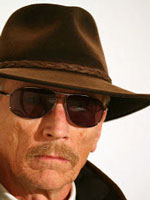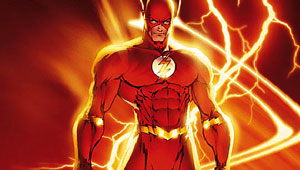
Camera technology has came a long way in the past few years. Photographers and enthusiasts alike have had a chance to chat on forums and express their ideas and wishes about what should be next in cameras. Remote radio triggers of flash and lighting have also taken big steps forwards. And I suppose that on-camera flash units are getting better too. However, it seems that there is a big discrepancy between the user feedback that has gone into camera design versus into on-camera flash.
I have to admit that I have a problem with on-camera flash. I recently spoke to a professional colleague of mine and he flatly stated, “I refuse to use it,” and then we said in unison, “Why don’t they just put a big dial on the side of it?” We looked at each other with mutual surprise, but in total agreement.
You have probably noticed many press photographers carrying flash units with a frosty beam spreader in front. Maybe you use one yourself. Both Canon and Nikon say don’t. But many still do because the factory on-camera flash does not always do what we expect or want it to do.
I shoot a lot in low light, clubs, music venues, theaters etc.
I also move around quite a bit to vary the angle of view and the coverage and to save the same people in the audience from having to listen to my DSLR the whole time. Therefore my shooting conditions constantly change making flash tuning difficult. In low light the need for extra light is obvious, but the result of a flash fill that is even half a stop off can ruin a radio transmitted shot.

Let us stay with the on-camera flash for a while. I usually start by letting the automation try to handle the flash. However, I can’t remember one low light session where I didn’t end up going all manual in both camera and flash. For low light music and theater, 1/60th of a second and an aperture resulting in a one stop underexposure plus a flash fill work well to steady the actors and bring the exposure up the missing stop many times.
However, I have found no way of getting my gear to repeat this in any form of automatic or semi-automatic way as I move around. It seems every new spot and posture requires testing and tuning all over again. The only help I have found is to “over-frame” the shot, preferably using a wider than necessary prime, focus on the selected figure or face, press the extra button to both focus and light meter on the same spot, reframe if necessary but preferably not, and then do any remaining reframing or offset framing in post.
In-camera light metering and automation is essentially foolproof in bright light. I do not understand why it does not produce an equally realistic image in low light, allowing you to use exposure compensation or fill flash to bring it up if desired.
With the present state of affairs I simply wish that my on-camera flash had a big dial on the side. A test shot or two and I should be fine.
As it now is I have to put on my glasses, press the button for LCD lighting, press a fingernail on that tiny little “Please Let Me Adjust You” button, make the adjustment and try again. No wonder Peter says, “I refuse to use it.”
Addendum by THEME: Right you are Bengt. The only time I use on-camera flash is in bright daylight as a filler. Or at night if you want that crazed party look. But then again, they’re handy. Bounced and controlled a good on-camera flash can make sense. But mostly they perform as a pepped up built-in flash. Problem is, flash can only achieve a correct exposure at only one distance (flash to subject/object). Too many variables (shadows, lights, darks) in dim light make measuring and automation unpredictably tricky. Relative to that distance, any distant background is necessarily underexposed, any close foreground is necessarily overexposed. Bounce flash can help to minimize this, but distance is a huge issue for flash, with huge implications concerning use. In contrast, direct sunlight is quite unique because its intensity appears not to vary with distance. A flash doesn’t act the same. It simply can’t. The only solution would be a flash that could brighten up the background more than the foreground. Controlled by some sort of dial…


